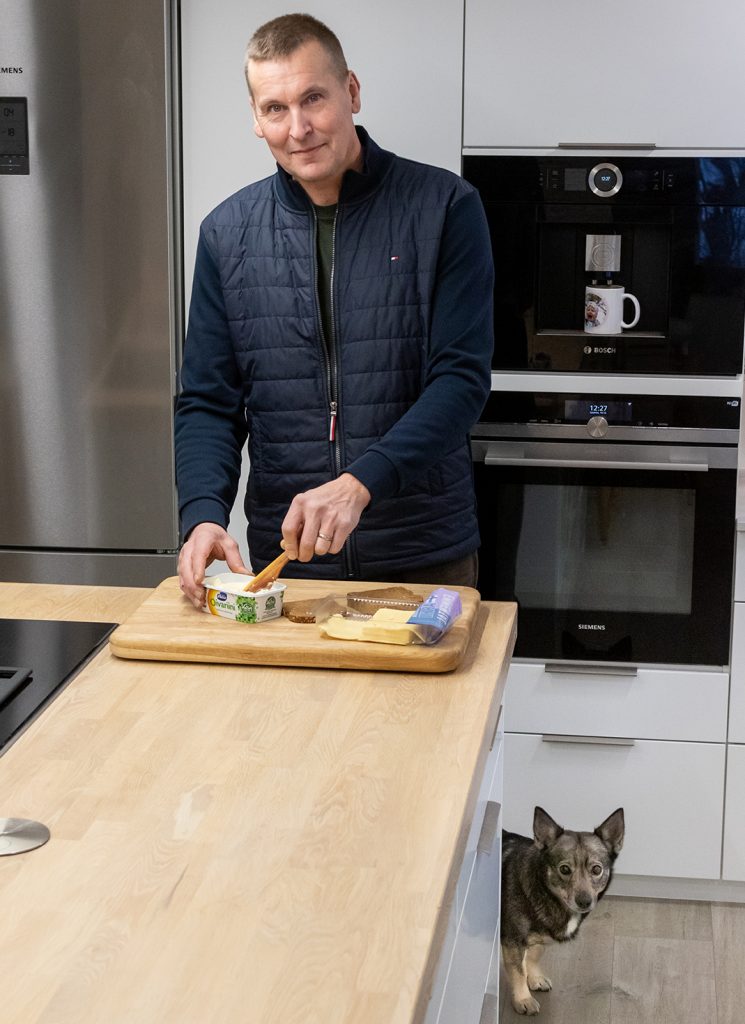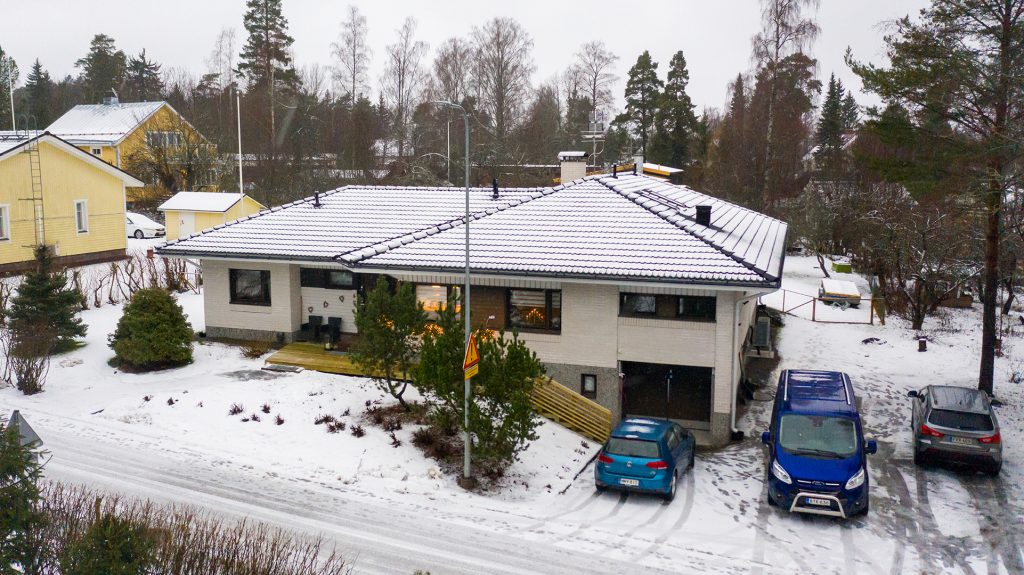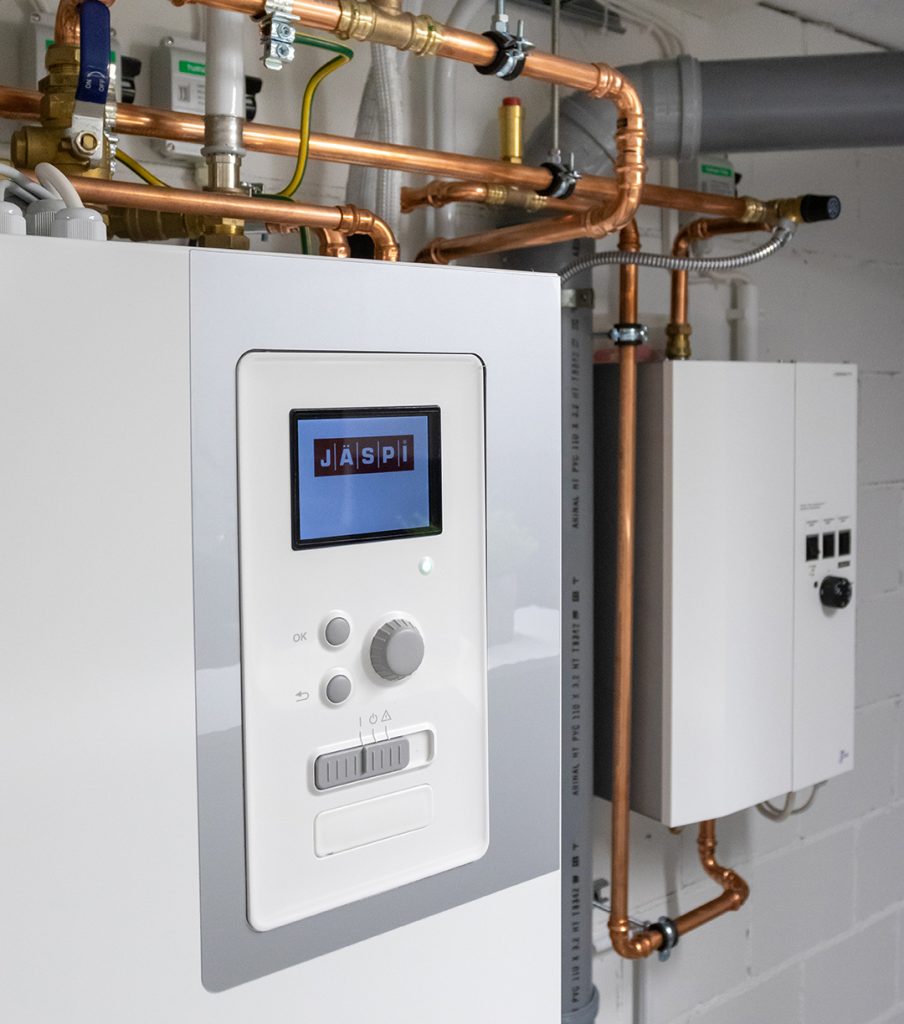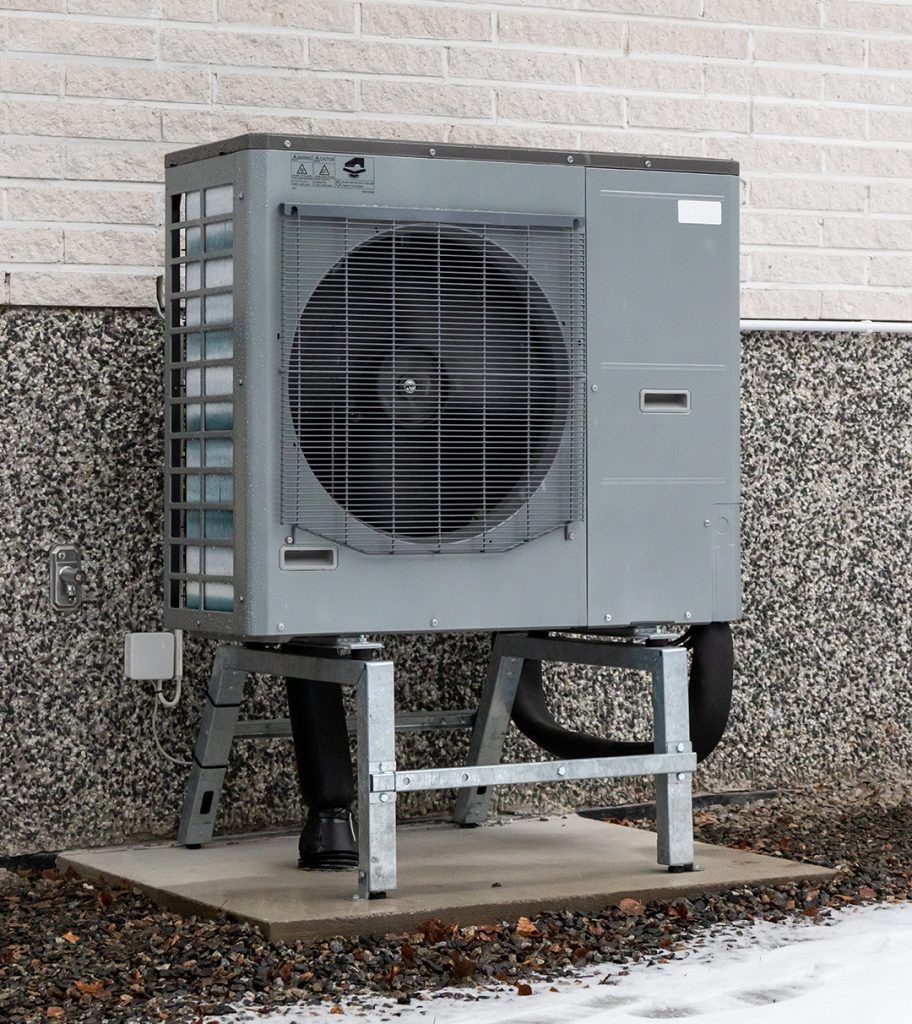Replacing electric heating with an air-to-water heat pump brings clear savings in energy costs
When direct electric heating is replaced by an air-to-water heat pump, a large saving in energy costs is created. In Tero Välimaa’s large house in Kangasala, energy costs will fall by as much as 30 percent. Living comfort also improved significantly.
When leaving for the trip in the autumn of 2019, Tero Välimaa did not guess that there would be a quick move when he came back. The detached house put up for sale had found its buyer and it took two months to find a new home.
 A plumbing, electrical and construction entrepreneur might have thought of building an entirely new house, but of course with just such a schedule, it didn’t work out.
A plumbing, electrical and construction entrepreneur might have thought of building an entirely new house, but of course with just such a schedule, it didn’t work out.
Fortunately, there was a familiar house for sale nearby, right in the center of Kangasala. Designed by an architect, the impressive manor house, completed in 1986, was well built. – My father installed electricity at that time, Tero Välimaa says.
The space in the house is 180 square meters in the living floor and basement. That’s more than enough for Tero Välimaa, his wife Heli Jalander and two dogs. The family’s four adult children have already moved into their own.
Direct electric heating needed a replacement
Instead of building a new house, Tero Välimaa was preparing for a thorough renovation project: the renewal of surfaces and building technology, as well as the renewal of the heating and heat distribution system.
Structurally, the house was fortunately in excellent condition and, for its age, better insulated and dense than usual. The basement floor is located underground except for one wall and a total of 50 centimeters thick styrox-insulated ingot walls retain heat well. The upstairs façade had 220 miles of insulation and the upper floor hard wool 350 miles.
– When installing the IV ducts, I added the same amount of blown wool to the top floor, Tero says.
 Tero Välimaa started renovating the house from building services systems. The house needed mechanical ventilation with heat recovery. The electricity his father had previously installed in the house for the previous owner had to be renewed.
Tero Välimaa started renovating the house from building services systems. The house needed mechanical ventilation with heat recovery. The electricity his father had previously installed in the house for the previous owner had to be renewed.
A decision had also to be made regarding the method of heating.
The house had direct electric heating, as is common in houses built in the mid-1980s. An additional heat source upstairs is an architectural storage fireplace.
However, given how large the building is, it wasn’t quite a terrible heating electricity surge.
– According to the previous owner, about 20,000 kWh of electricity had been consumed annually, Tero says.
Of course, direct electric heating is not economical, let alone environmentally friendly – especially in a large house. Old electric batteries also started to be near the end of their service life anyway.
An air-to-water heat pump proved to be the best option
Over the years, Tero Välimaa has sold a couple of hundred geothermal pumps to its customers, so it would have been natural to buy a similar one for your own home. However, drilling an energy well in a house next to a ridge is not a cost-effective solution.
 An air-to-water heat pump is a natural alternative to a ground source heat pump. After researching the devices on the market, Tero Välimaa ended up with Jäspi Tehowatti Air, which has MyUpway remote monitoring as standard.
An air-to-water heat pump is a natural alternative to a ground source heat pump. After researching the devices on the market, Tero Välimaa ended up with Jäspi Tehowatti Air, which has MyUpway remote monitoring as standard.
-The device is really efficient. Under good conditions, its efficiency (COP) is close to five. Our system includes a Jäspi Split 12 kW outdoor unit, an indoor control unit and a Jäspi additional watt electric boiler, which ensures that there is enough heat even in severe frosts.
The indoor unit of the device is only 1.8 meters high, which is a good thing when it is fitted in a low basement space. The built-in accumulator holds 215 liters of water, which is enough for hot water.
– However, two adults no longer need very much hot water, Tero laughs.
– By the way, a 15-year-old Jäspi water heater went out of the basement for cottage use. It was still in perfect condition, he glows.
The major renovation went well due to the great help of the host
Carrying out an energy renovation in a large house requires quite a bit of scheduling and adaptation if you have to live in the middle of it. Even if circulating underfloor heating had been the number one choice for living comfort, it did not make sense to install it.
As a professional in the field, Tero did most of the work himself. After removing the radiators, routes had to be drilled through the vault for the heating line pipes. In the basement ceiling, the composite pipes were intentionally left uninsulated.
 The rest of the contract was carried out by entrepreneur Sami Lehtinen from SL-Putki Oy.
The rest of the contract was carried out by entrepreneur Sami Lehtinen from SL-Putki Oy.
– In terms of plumbing, of course, the project was easy when the customer did a lot of preparatory work as agreed in advance. Actually, the only challenge was to fit the heat pump piping into a small space, Sami Lehtinen says.
Significant savings are coming in energy costs
The Air-to-Water Heat Pump was launched at the beginning of October 2020, so Tero Välimaa has only a short experience of its new heating system. Even with conservative estimates, he believes he will save about 30 percent on heating costs in the long run.
More joy from the renovation has already been gained.
– I noticed after only one month of use that the heat in the living space is pleasantly even. The comfort of living thus improved. And even if we renovate the house as the home for the rest of our lives, it is nice to know that after such an investment, the resale value of the house has also improved tremendously, Tero sums up.

